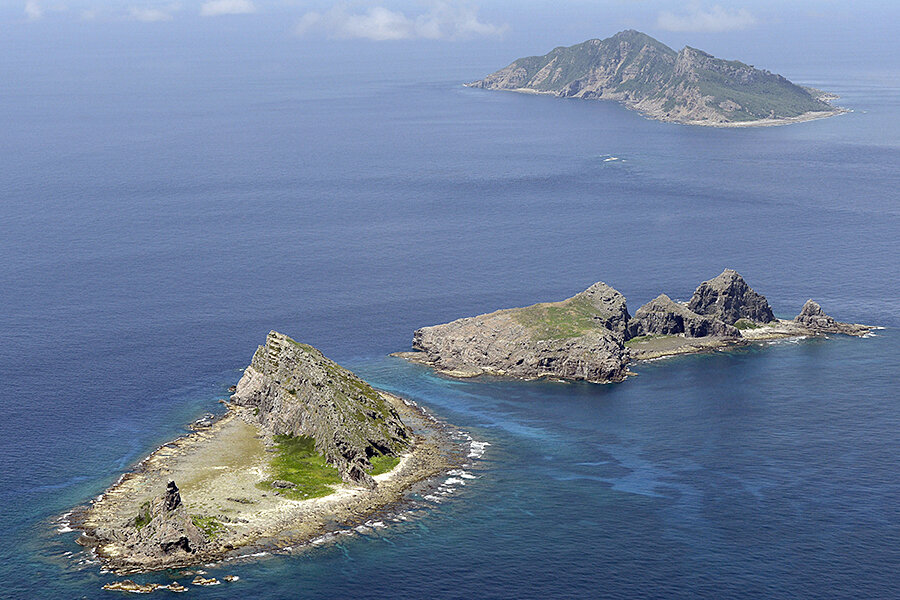Japan and China square off over disputed East China Sea territory
Loading...
Japan this week asked China to stop building oil platforms next to a disputed area in the East China Sea. Beijing in turn called Japanese foreign policy "two-faced" and reprimanded Tokyo for issuing photos of the oil rigs.
The exchange follows a defense white paper by Japan on Tuesday that said China's construction of some 16 oil rigs could be used to exploit resources on Japan’s side of territorial waters.
The paper, issued days after Japanese Prime Minister Shinzo Abe won the first round in a legislative battle to allow Japan’s Self Defense Forces to fight overseas, also criticized China for its recent activity near Fiery Cross Reef in the South China Sea. Beijing has been reclaiming small islands there off the coasts of Vietnam and the Philippines, including building a landing strip, reports Defense News.
The current spat coincides with the recent focus by Pacific nations on China's push in the South China Sea, and also with the symbolic 70th anniversary of the end of World War II, a time of considerable sensitivity in the region. Asia has not seen the same kind of postwar resolution found, for example, in Europe between the Allies and Germany.
Today the Chinese ambassador to Tokyo asked that Japan not back away from expressions of remorse for World War II, saying this would “rub salt into the wounds” of nations that suffered, as reported today by Reuters.
The Sydney Morning Herald today said that Tokyo delayed the release of the white paper by a week in order to include "new details" about the oil platforms. Japan says that 12 of the 16 rigs have been under construction since 2013.
Beijing this week seemed particularly irate at Tokyo’s release of photos of the oil rigs in the East China Sea. They are located roughly equidistant between Taiwan and the Japanese mainland.
Japanese chief cabinet secretary Yoshihide Suga said the decision to show the oil rigs came because "China's development activities in the East China Sea have shown no signs of ceasing. Given rising concerns within and outside of Japan over China's various attempts to change the status quo, we have decided to release what can be released in an appropriate manner."
The Chinese defense ministry retorted that "This kind of action completely lays bare the two-faced nature of Japan's foreign policy and has a detrimental impact on peace."
At a deeper level, China faces questions by Pacific nations over its more aggressive behavior recently, after years of reassuring its neighbors not to worry about its rapid growth in wealth and power. China has long said it was committed to a policy of “peaceful rise.”
Now, with an ongoing standoff with the Philippines on the Scarborough Shoal, Manila has turned to an international court for a ruling, and China’s behavior off the coast of Vietnam last year has led to Hanoi to look to the US for help.
Yesterday The Christian Science Monitor quoted specialist Hong Nong in a piece asking if China has "overstepped" the mark in its South China Sea expansion:
China’s activities in the South China Sea have sparked “doubts about its intentions,” worries Hong Nong, an analyst at China’s National Institute for South China Sea Studies. As China focused on building its economy and infrastructure it talked to neighbors about peace. Now, Ms. Hong says, “People's perceptions have changed. China needs to do more to persuade the world that it still adheres to its ‘peaceful rise’ policy.”
On Tuesday the Monitor looked at the question from the point of view of Manila:
...The Philippines, Taiwan, Malaysia, Vietnam and Brunei, along with Indonesia, have long had their own competing territorial disputes in the South China Sea.
But those suddenly seem less worrying as China pushes a claim over hundreds of mostly uninhabited small islands, reefs, and rocks in the 1.4-million square mile South China Sea.
Now, feeling pushed around and pushed together, these nations are exploring diplomacy with the US, new defense options, and even international legal recourse to stop China from extending its sphere of influence just off their shores.
Today, officials in Manila announced a 25 percent increase in military spending over 13 years aimed, they say, at bolstering naval defenses and countering China's claims.






